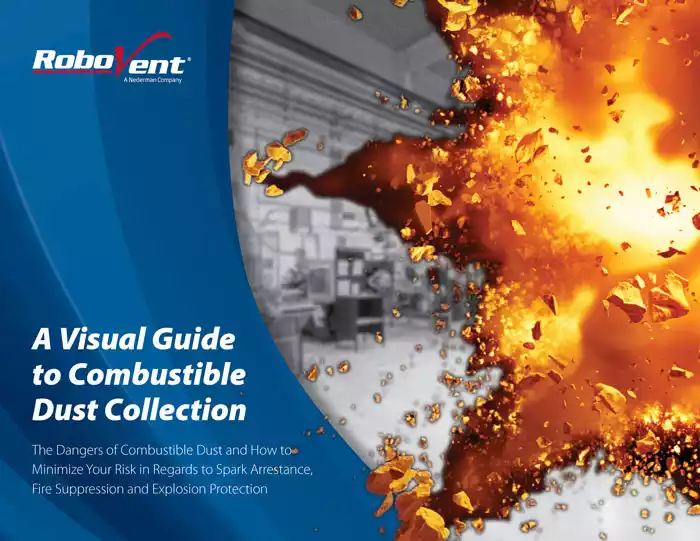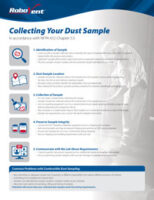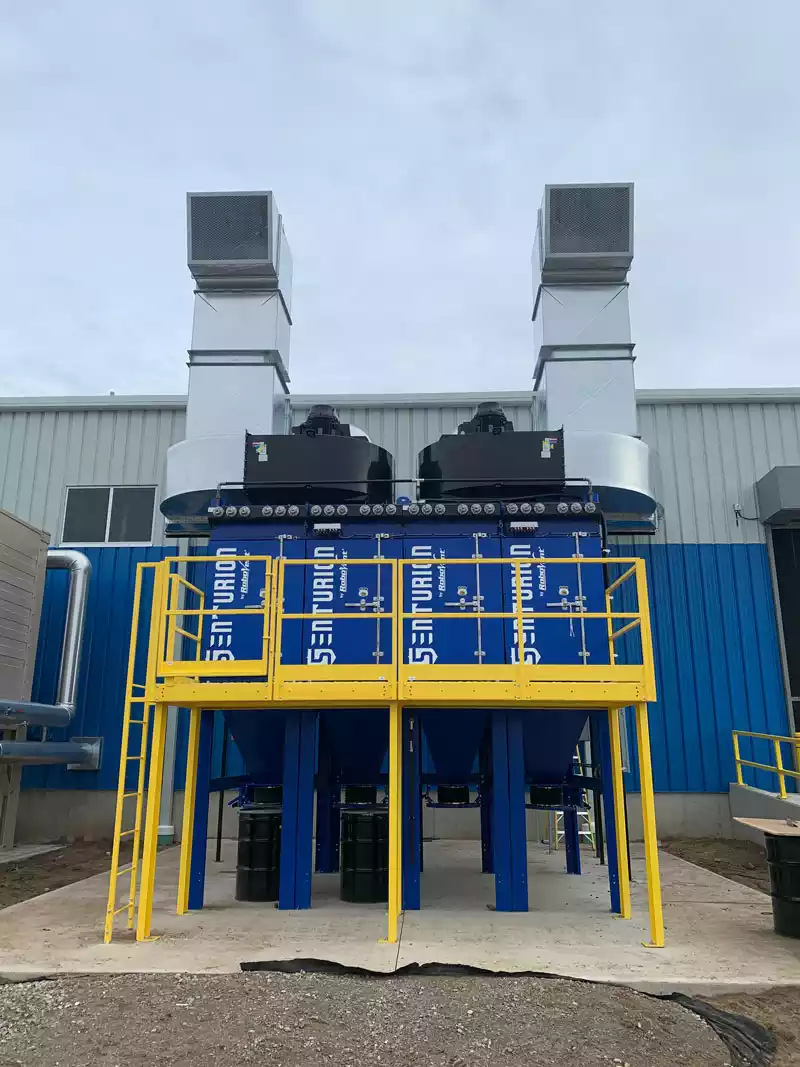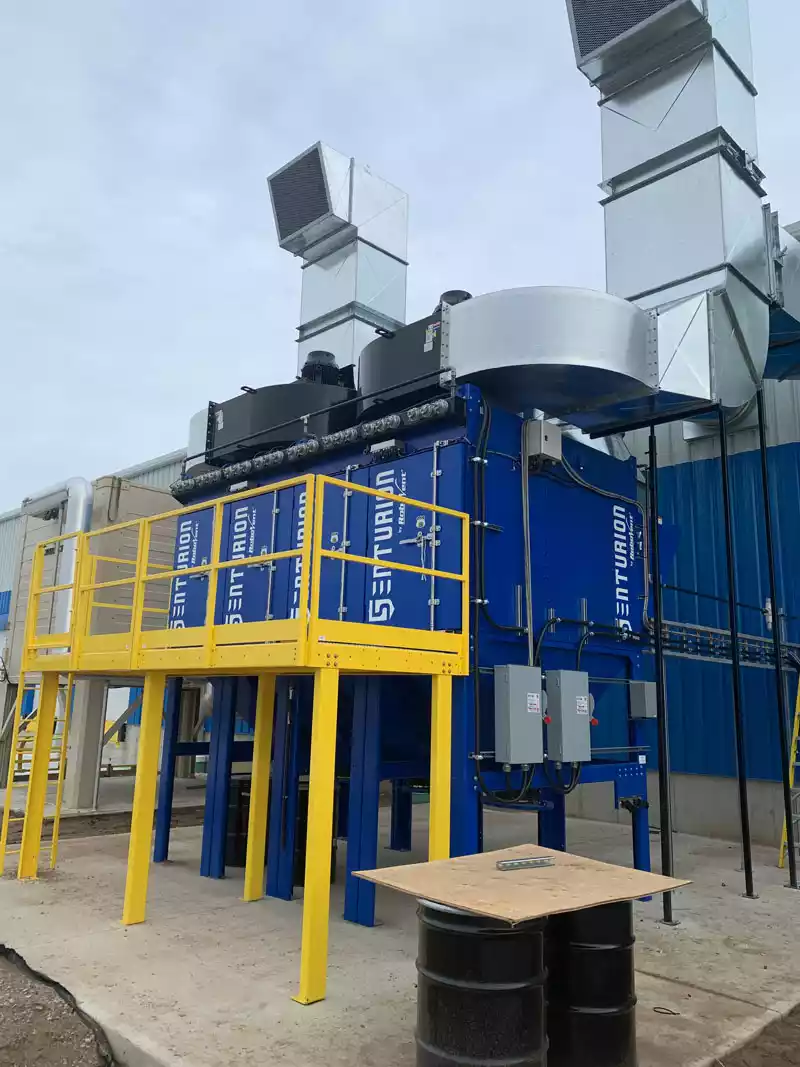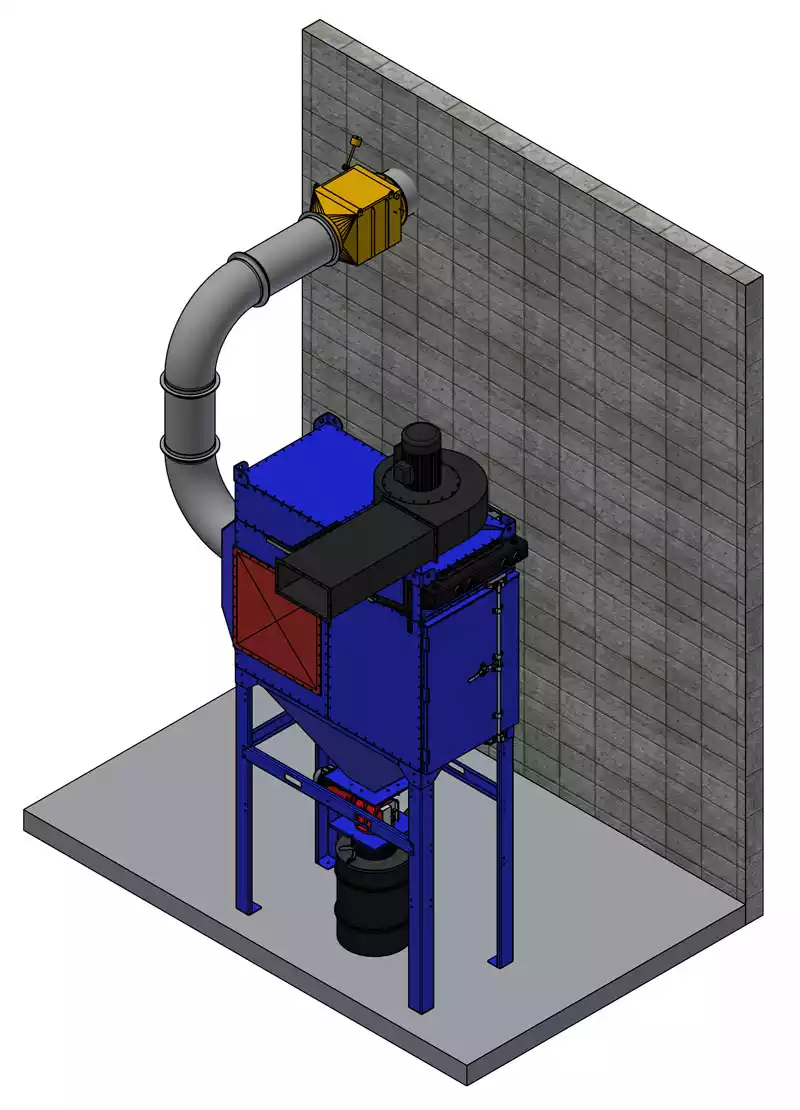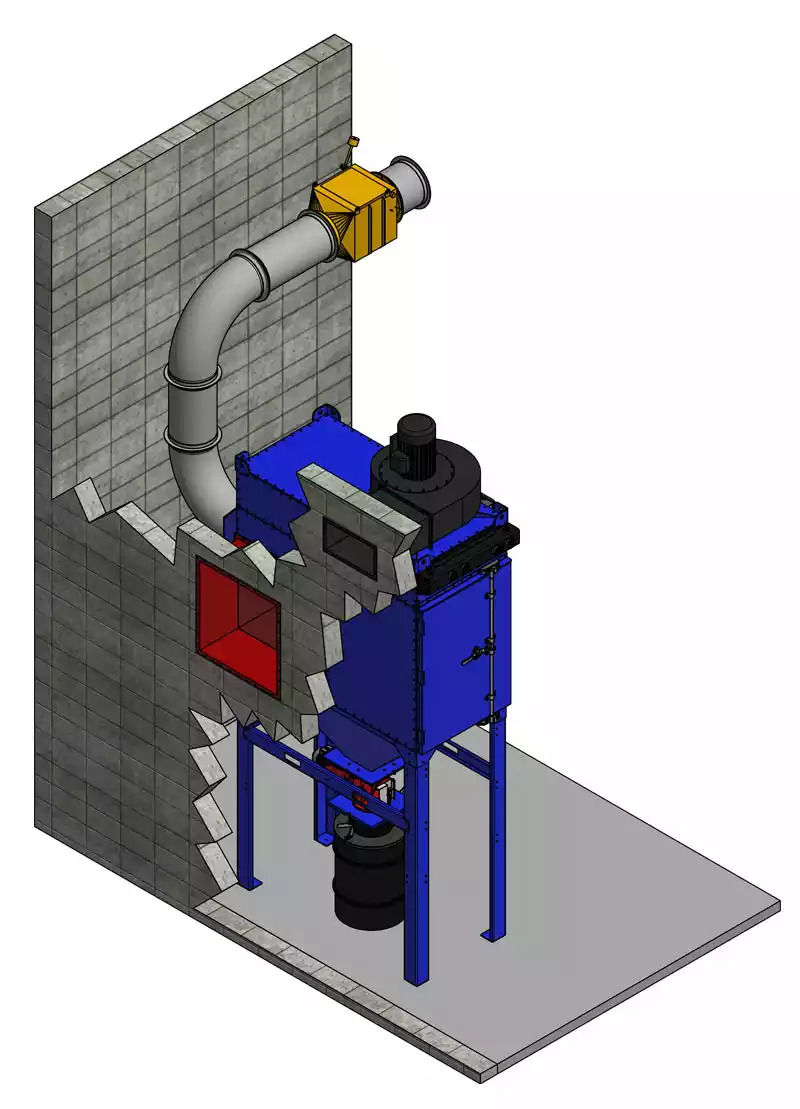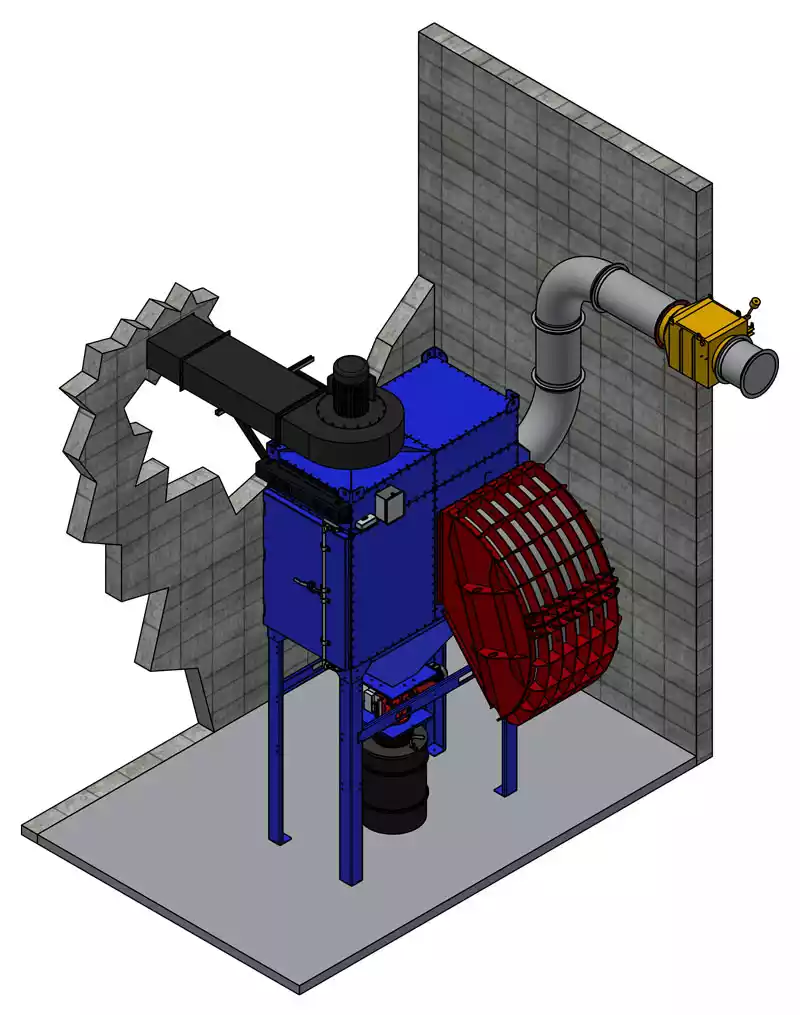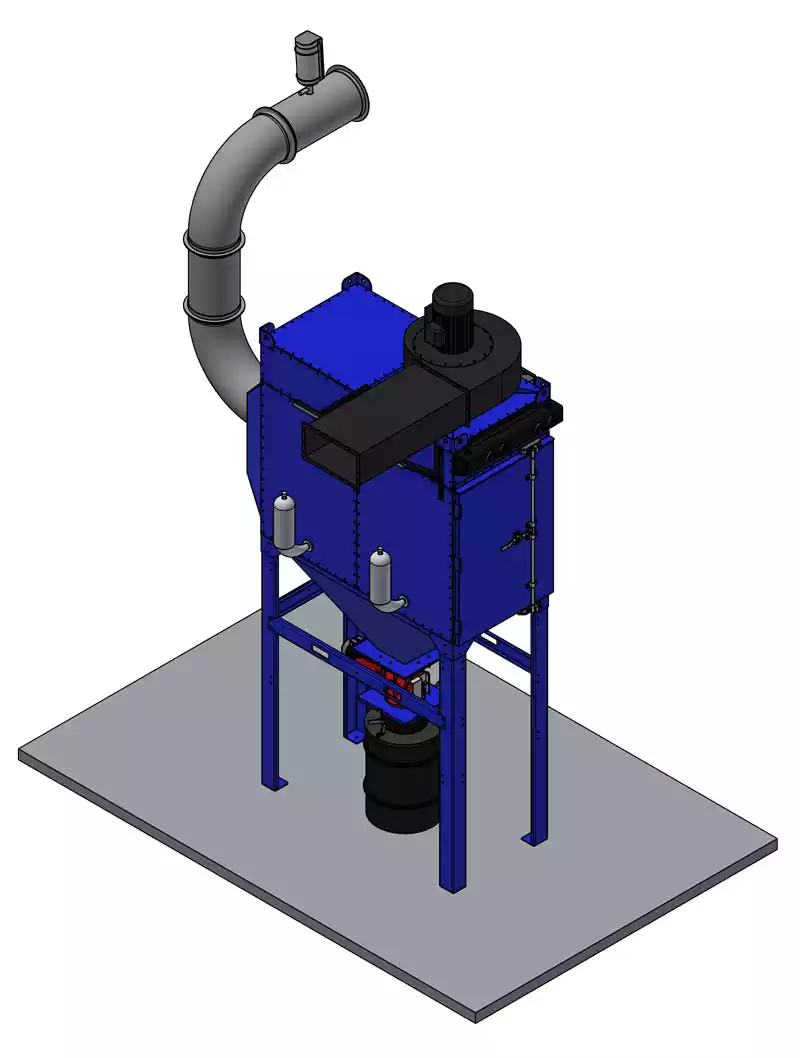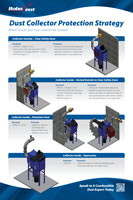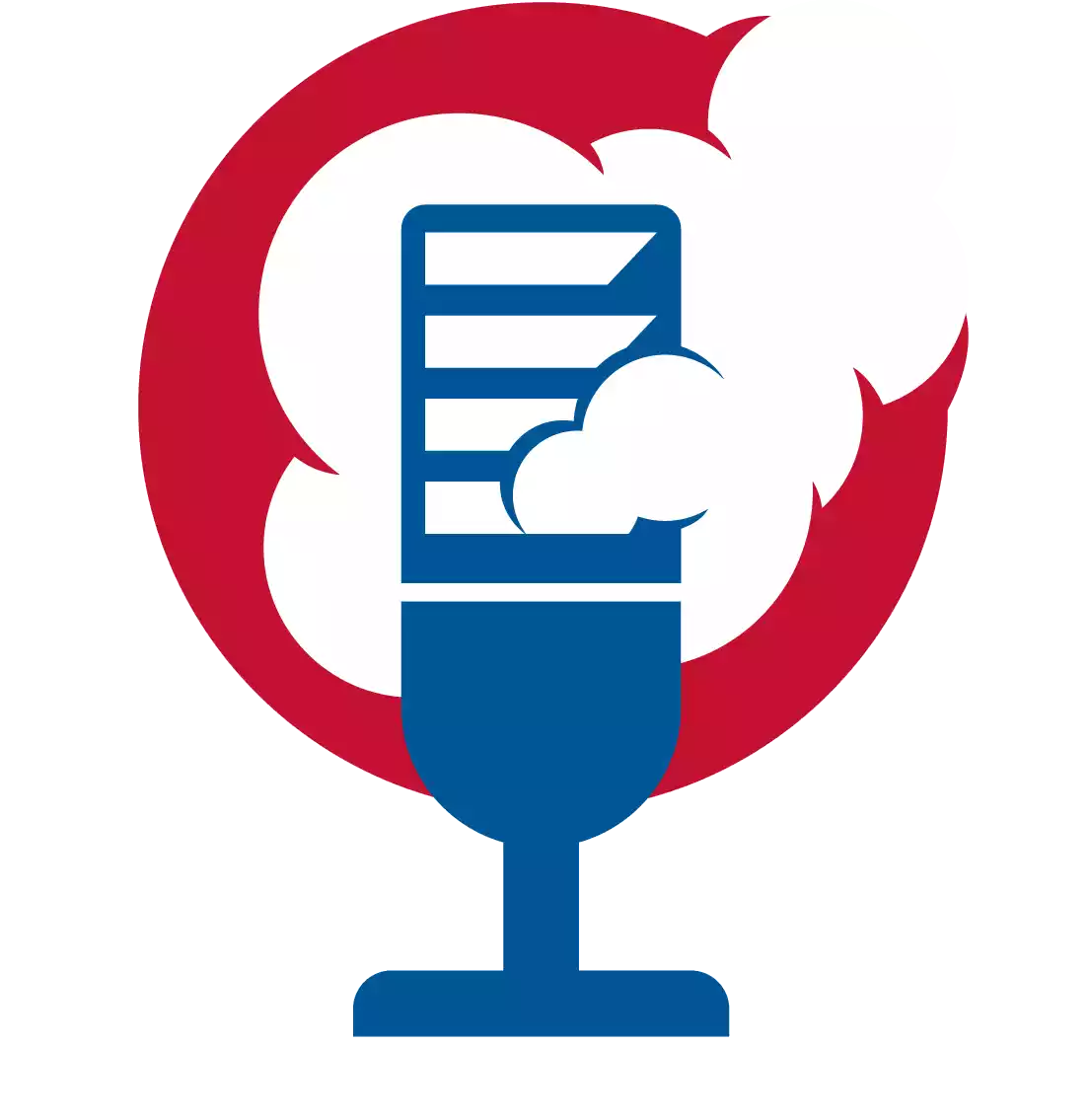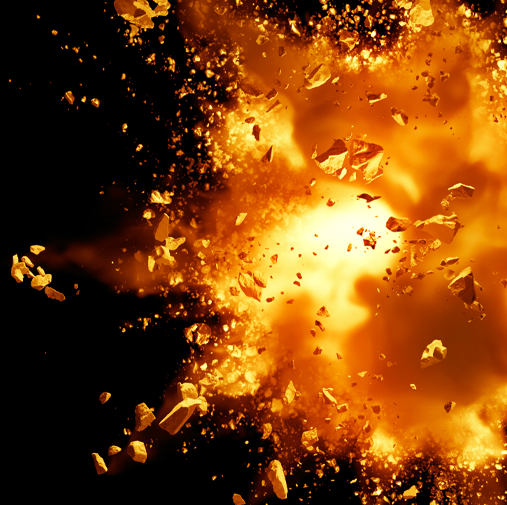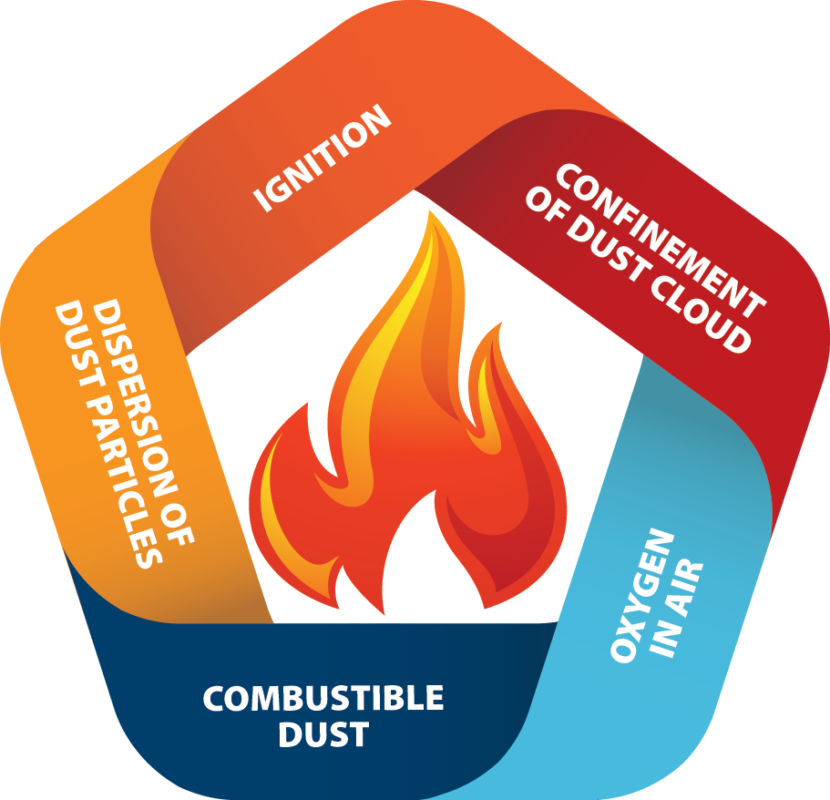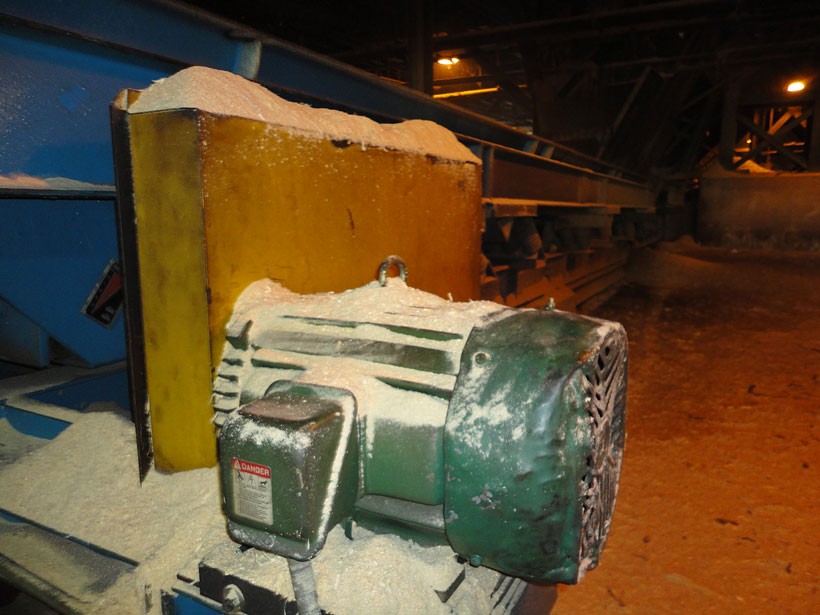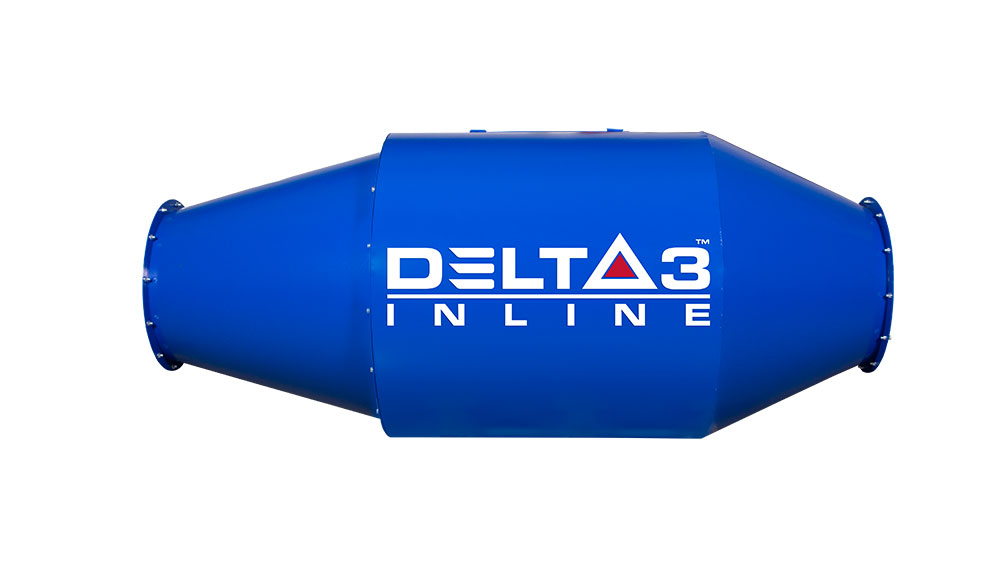A VISUAL GUIDE TO COMBUSTIBLE DUST COLLECTION
HOW (AND WHY) TO KEEP YOUR FACILITY AIR CLEAN AND SAFE
-
Material Characterization and the Dust Hazard Analysis (DHA)
-
Process Hazard Identification and Mitigation Options
-
Dust Collection System Design for Combustible Dusts (including Fire Protection, Fire Suppression, and Explosion Protection)
-
Dust Collector Configuration and Placement
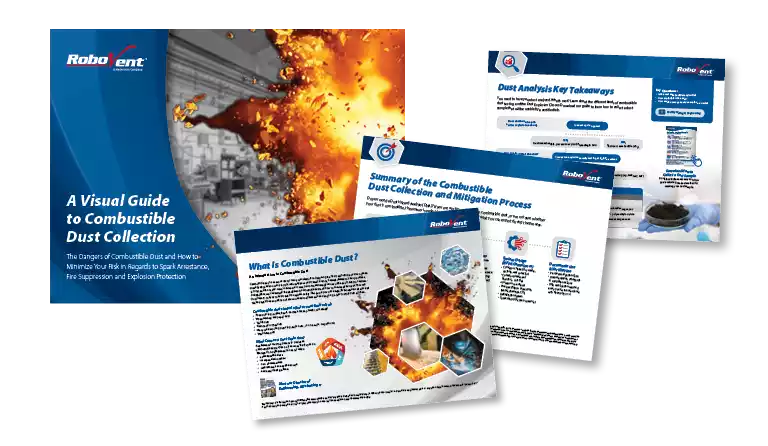
A VISUAL GUIDE TO COMBUSTIBLE DUST COLLECTION
HOW (AND WHY) TO KEEP YOUR FACILITY AIR CLEAN AND SAFE
Need to Collect a Dust Sample?
The first step in conducting a DHA is (usually) having your dust tested. Dust must be sampled in accordance with NFPA 652 Chapter 5.5. Learn how to collect a dust sample and how to avoid common problems with dust sample collection in our guide: Collecting Your Dust Sample.

Dust Collector Protection Strategy
Where should your dust collector be located when collecting combustible dust? Indoors or out? How much space do you need around it? What types of isolation and venting are needed? Understand the NFPA standards for dust collection system design when handling explosible materials. Download the poster: Dust Collector Protection Strategy
Combustible Dust FAQs
Learn more about combustible dust, OSHA regulations and NFPA standards, the explosion indices and more in our combustible dust FAQs.


